After spending the day touring Cartagena, I met the Mystic Wind and the rest of the crew at the fuel dock so we could get the bike on board. Just riding the bike on to the narrow concrete jetty over the fuel lines and water hoses everywhere was hairy enough, so imagine how fast my heart was pounding when we started to winch it on board. Hoisted from 3 lines suspended from the mast, it wasn't long before my GS was over the rail and we were strapping it down against the deck and 2 of the mastcables. I celebrated by cracking open the crate of Erdinger I had bought for the journey, sharing them out amongst tehe rest of the crew, they didn't last the evening. Later on, it turned out that Denis's agent had not been able to get my Carnet de Passage stamped, so rather than delay our departure the next morning, I did it myself with an etamperia de fechas I bought from a Papeleria in Cartagena and a 50 centavos piece soaked in the ink from a broken biro, which had a great official looking crest on it.
In the morning, I stowed my boxes in a fore hatch, above a dented hull which was letting in some water, which had hit a half submerged shipping container a couple of year's ago, and like a lot on the Mystic Wind, was awaiting repair. This included a toilet with a broken pump, a dinghy that had a puncture down one side and was more patch than dinghy and rotting wooden panelling through the entire lower deck, which, along with the toilet, gave the whole boat a heady whiff below decks. In fact the whole effect was a bit like the Black Dog, Captain Pugwash, Master Bates, Seaman Stains and Roger the Cabin Boy were all present and correct.
Captain Denis is a great bloke, who really went the extra mile to help me out. Although he is a rough diamond, who enjoys the sauce, he did rub some people up the wrong way (e.g. Kyle who left early from Porvenir after an argument with him) he reminded me of a cross between the lead singer of the New York Dolls and Captain Jack Sparrow, often pissed and / or stoned, always opinionated but a heart of gold. His friend and Colombian shipmate, Angel, did most of the technical work on the boat with the sails, anchor etc, but was a much better communictor and coach than the skipper, so he taught me a lot about navigating, steering, etc around the Mystic Wind. He was pretty much nocturnal, taking the helm at night and spending most of the day coked up and or sleeping, waking at midday and immediately mixing a strong cuba libre in litre measuring jug, downing one and then sipping another slowly. I never saw him eat anything on the whole 6 day crossing. One night when we were up together steering, he confided in me that he had a terminal cancer, which seemed to explain his easygoing personality and self destructive substance abuse. Adam is an American who seems to have spent the last few years drifting around Latin America after a messy divorce. He had overstayed his visa in Colombia and Denis had agreed to use his fixer to get him an exit stamp without having to pay the fines. Quite a small bloke, he seems sensitive of his size and overcompensates by talking loudly (as most Americans seem to), recently getting a big tattoo, working out. His inferiority complex was manifested openly when he baulked at Denis chiding him for mistakes, although protesting the loudest, he actually seemed to put up with the most abuse from the skipper. So much so, that he confirmed my masochist theory and was going to stay and work with Denis for a little while longer. .
Kyle was a chilled out Canuck, the main source of weed on the boat and someone that everyone seemed to get along with, which is probably why Denis took an exception to him. Jens is an East German guy who was on a round the world bicycle trip, although I realised after talking to him that all the cyclists that I had seen so far on this trip, mostly are not actually cycling the whole way, but do like Jens and cherry - pick the best bits and use buses and planes to get in between. He was a keen motorcyclist too, and had bought a korean off - road bike to do the whole of Australia on before getting back on the bicycle in Valparaiso and really helped a lot getting the bike on and off the boat. Gia and Terese were the final compliment of the crew, 2 Norwegian ladies who mostly kept themselves to themselves, mainly becuse they spent most of the time being seasick and taking up most of the limited deck space...
The first part of the journey was the worst. After leaving Cartagena through Boca Grande, over the modern 5 metre gap in the Spanish Submarine wall, we were out in the open and despite being a catamaran, the dodgy engine (sometimes it started, sometimes it didn't and it often overheated) and our reliance on the single jib sail (the mainsail was "being repaired") started to show. At the end of the day, as the sun was setting and the gibbous moon was rising, it was very disheartening to still be able to see the high rises of Bocagrande clearly behind us on the eastern horizon. The crew were getting mutinous after a day of seasickness and Captain Jack Sparrow was under some pressure. Ill - advisedly, he opened up a debate about what we should do from thereon in. Maybe now we will be getting off at Karti and not Portobelo, closer along the Panamanian coast? My only concern on this plan was the poor mountain and jungle road to Panama City and how do I get my bike off of the launch and onshore with no dock? Then I have to get into Panama City and sort out the paperwork. One good thing is that at least this way, if we don't go into Portobelo as planned, then I will avoid having to go through Colon, which is one of the most dangerous cities in the world, where people get shot and robbed in the street in daylight according to the Lonely Planet Central America.
The most disconcerting thing was all the debate and the constant lack of clear planning and communication. Also, it is so difficult when travelling with others, all with different timeframes and agendas. Captain Jack wants to get pissed and see his girlfriend, Angel wants to keep the peace and get high with the single - minded dedication of someone who knows they have a terminal illness, Adam wants to spend time with people who will talk to him, the Scandinavians want to see a desert island, Kyle wants to see Panama City before catching his flight back to Canada and Jens wants to stick to the original plan, because that is what was agreed originally, and that is the most important thing if you are German. I guess that the constant changes in plan are actually intended as exhuberant and excited suggestions from the skipper on a high, and, eventually, we do follow the basic plan agreed before departure from Cartagena.
Criticised for poor food, poor hygiene, poor safety and yet I thought Denis still had added charming and disarming vulnerability and niaivety to the whole proceedings. We actually ran out of water on the last day, which is unforgiveable on such a short crossing. Luckily we had a big sack of green, sour oranges, which we ate about 8 each during the day to slake our thirsts. One sail and an unreliable engine, meant the journey took longer than it should and was much rougher as we were getting bobbed about by the waves, rather than having the speed to sail over them or with them. Consequently, on the second morning, I overtightened the straps on my bike, subsequently realising that I had bent the side stand, so now my bike has an unnerving tendency to topple over onto the boxes on the side at alarmingly frequency.
Despite it all, I did enjoy the crossing. Steering the boat at night was good fun, following a course of 240 degrees, following the wind to the west and keeping the mast between the setting full moon and the rising constellation of Orion, with all 7 of the Pliedes visible in the great light quality was magical. Also the San Blas Islands were a highlight. We landed in Porvenir, the capital of this autonomous region to get our entry visas. This process involved drinking too much Abuelo Rum with the Immigration Officer, paddling back in the lurching half - inflated dinghy to the boat moored in the lagoon during a tropical storm and casting off to Chichame. Chichame was an archetypal desert island, where we hung around with Puna and Umberto, the matriarch and patriarch of this branch of the Kuna tribe. The Kunas claim to be the only indigenous tribe in Latin America that was never subjugated by the Spanish. This is mainly due to their living in the San Blas archipelago, 366 small coral islands with deadly reefs in between, which made it difficult for them to be pinned down. The women still wear traditional garb, consisting of mola embroidery and beadwork worn on the legs and arms.
After eschewing the dinghy and swimming ashore from the lagoon, enjoying some cold Balboa beers and spear - fishing for Grouper and Red Snapper, we came ashore and had a feast of the fresh fish, lentils and coconut rice that we cooked on the Kuna's kitchen fire. We all get back on board in the evening, only to realise that we hadn't paid for our drinks. When I volunteer to go and settle up with Umberto, it is interesting to see who's notes are rolled up into tubes in their pockets!? There was a strong current, which was easier to deal with in one of the Kuna dug out canoes that I borrowed, even though it was inherently unstable and balanced on a knife - edge, than in our newly patched dinghy when I went to settle up and go for the last beer run of the evening. Denis came too, keen for more beers. When we went into their hut to pay, it was pretty cosy, with everyone sitting under the electric bulb and chatting or sewing more mola whilst swinging from hammocks.
Next day, we rounded Isla Drake under a full moon, entering Portobelo at night, rowing the half inflated dinghy, still more patch than dinghy, the repair failing to have stemmed the escape of air. Portobelo is indeed a beatiful harbour where Colombus sought shelter on his 3rd and final journey to the Americas in 1502 and where the wreck of the abandoned Vizcaina has recently been located by marine archeologists. Now little more than a down at heel tropical village with a protected anchorage and a small concrete jetty on top of oil barrels, converted into supporting columns, Portobelo was once the northern terminus of the Camino Real. Here Peruvian treasure and Bolivian precious metals were stored in huge bonded warehouses and loaded onto Spanish - bound caravels, travelling in annual Armadas for security after being transported across the isthmus from Panama City by mule train. A British visitor, in 1637, Thomas Gage, wrote that it took 30 days for that year's cargo to be loaded onto the ship after passing through the Royal Contaduria or Customs House, which still stands impressively, if incongrously, in the middle of the modern grocery shops, bars and fried chicken joints, now serving as a musuem.
The natural bay is also dotted with ruined defensive walls, forts and towers poking periodically through the tropical forest canopy. Still impressive in scale, after centuries of neglect and with thousands of tons of rock taken to be used in construction of the Panama Canal at the end of the nineteenth century. Needless to say, reports of this wealth attracted the Pirates, with Drake and Morgan both having targetted Portobelo for their own particularly unethical brand of tourism, taking more than photos and leaving a trail of destruction behind them. Portobelo proved to be Drake's downfall when he died here of dysentery in 1596. the local legend had it that he was buried on Isla Drake, although this turned out to be false as it is a rocky outcrop that would be impossible to bury anyone on. Recently discovered documents revealed that he was buried with honours at sea, just beyond the mouth of the harbour in a lead lined coffin. Apparently, Plymouth City Council had sponsored another team of marine archeologists to locate, recover and return his remains to his home town.
Entering the town, it seemed to me that Portobelo also managed to retain elements of its historical levels of hygiene as we toured the town after docking at around 9pm and rowing in from the Mystic Wind in its half - inflated dinghy. Having said that, having not had a proper wash for more than a week myself, I didn't feel in a position to criticise! We indulged in picante fried chicken, with fried bananas and papas and managed to protect ourselves from stomach bugs with a combination of ice - cold Balboas and shots of Ron Abuelo. Soon our land legs started to feel a bit wobbly and after successfully averting Denis's enthusiasm for getting my bike off there and then in the dark, because the tide was high, we paddled back to the Mystic Wind and spent our last night on her decks.
Up early in the morning to unload my bike into Porferio's launch and then haul the bike out onto the concrete jetty, I pay to get it filled with petrol from jerry cans at the grocery store and washed to get the worst of the sea salt off. I agreed with Denis to give him a lift to Colon so he could see his girlfriend if he helped me find the customs office. We got there by 11am, only to be told that the only Customs Officer that could help us was "at lunch" and we should come back in a couple of hours. So, I took Denis into Colon, where we met his girlfriend and her mother outside their tenement building and went for a Lebanese meal. Colon lived up to its reputation, with smoking shells of cars and staggering shells of men, littering the rubbish strewn streets at midday. Lots of men were carrying machetes and openly brandishing guns of all types, without a policeman to be seen. The builings all used to be brightly painted and were originally built for the workers on the Panama Canal, Paul Gauguin amongst them, but were now peeling and literally falling down after more than a century in the unforgiving tropical heat.
Denis offered to come back to the customs office with me, if I gave him a lift on to Panama City in what turned out to be a 5 hours wait for Maria Vargas, Customs Officer. Eventually we got going, I dropped off Denis halfway to Panama City as the sun was going down and headed on in the dark as the Transisthmus Highway collapsed in the gathering gloom into a jungle tunnel, electric with the deafening sound of cicadas. Parrots and parakeets were swooping everywhere, congregating on the power lines at the side of the road. There were also a lot of bats attracted to my headlights, at least I thought they were bats until one of the enormous grasshopper / locust thingies landed on my shoulder with a thud and took a lot of wrestling to "flick" off. Hot, tired, dehydrated and now scared, I decided not to fight through the traffic of Panama City, but took the opportunity to stay opposite the Miraflores locks in a hall of residence attached to the Cuidad de Saber, City of Knowledge Campus.
Whilst unpacking my bike, it had toppled off its sidestand, so I went back outside later in my board shorts and a T shirt for 5 minutes, checking to see if I could adjust it so the bike didn't keep toppling over. There was nothing obvious to be done, but in the process I got harrassed and bitten all over my exposed skin (legs, feet, arms, hands and face) by loads of mosquitoes. Given that this is a prevalent malarial area, along with Yellow Fever too (in fact the disease was identified first in Panama) I scarpered quickly to itch and scratch at my leisure in my room.
Next day after a shower (!) I toured Panama City, checking out a temporary Rembrandt exhibit and visiting the statue to Balboa, Vasco Nunez not Rocky, who was the first to cross the Isthmus and discover the Pacific at the beginning of the sixteenth century and gave his name to the national beer and the centavo divisions of the USD that form the national currency. Then I checked out the Miraflores locks, with the massive container ships, incongruously passing through the humid jungle. Panama City was pretty unremarkable, with Singapore style modern anonymous high rises, although with some seedier areas in betwee at the lower levels.
I was hot and sweaty again by the afternoon and so was pleased when it became time to meet up with Denis, Negrita, Angel and Adam in a bar in the rougher part of Panama Viejo. The bar was an open garage, with a half wall in one corner to block off the drain which provided for the only toilet facilities for men only and the bar was a cage where bottles of beer or rum could be bought. We went to a casino in the newer, cleaner and more sterile part of town, which again reminded me of Hong Kong or Kuala Lumpur or somewhere else in Asia, because of its modernism and humidity. Not enjoying the casino, having had enough of the too sweet for me rum and too tasteless and gassy for me lager, I snuck out to avoid a big farewell and got a taxi back to Miraflores.
Next day (Sunday) I was out early to beat the city traffic and the heat, crossing the Puente de las Americas over the canal that physically seperates the Americas and on towards the cool of the Chiriqui Highlands. On the way, there were 2 half - hearted attempts by the Panamanian police to extort money from me for speeding. It seemed that once I had given them my Dubai licence and explained that I was "Gales", they either got confused or disheartened that I wasn't American. I get the distinct impression than the Yanks hand over the cash far more readily when challenged by Latin America's finest, sworn to serve themselves and protect their bank balances, thus making it tougher for the rest of us gringitos.
I was heading to an "eco -resort" which sounded great, but once I got there, despite being told the opposite, they did not have secure parking for my bike. It took half an hour to scramble up the mountainside in all my bike gear, leaving my bike on the road to discover this. With a considerable bead and mint on, I decided to ride on the lovely sweeping, cool mountain roads towards the resort of Bocas del Toro. When I got there mid - afternoon, I didn't fancy that either as it was very hot on the Caribbean coast and full of double - baggers, so I went on back through the mountains on some more lovely roads and ended up at the Pasos de Canoas border crossing, before I knew what was happening I was out of Panama and into Costa Rica.
Costa Rica is the first place in the trip so far where I HAD to buy insurance and show my Yellow Fever certificate, before getting all the necessary stamps. I went on a further 25km and stopped at a hotel in Ciudad Nelly, with secure parking and a reassuringly bark - inclined dog. I got into town to a chicken joint and realised that contrary to my previous impression, Costa Rica does not officially use USD, but has its own currency, the Colone. Going to the Banco National ATM, I withdrew 5000 colones, not really knowing how much this was (later finding out this was 10 USD) and went back to the Chicken joint, which, in common with every other place I went to in Costa Rica, reassuringly had pickled chillis, hot sour sauce and hot sweet sauce on the table. After having scoffed and spiced myself up, I went back to the hotel and collapsed into a coma.
Next day, up early, I stopped off for a great breakfast of frijoles negras, huevos fritos y pan fresca and was on my way to San Jose on a beautiful section of the Panamericana. Alpine quality blacktop, combined with sweeping mountain roads through cool cloud forest, zig - zagging across the continental divide. Through the unremarkable San Juan, with the help of a biker called Raul.
He led me through the low - rise streets destroyed by several earthquakesand lacking any significant colonial Architecture. Despite the hopeful name given by Colombus, there was little mineral wealth discovered here by the Spanish and so they didn't build big here, dsitracted by the hoards of Oro y Plata elsewhere. In a strange twist of fate, this history has allowed Costa Rica to develop a much more cohesive society than the rest of the region, avoiding the worst divisions of wealth and race suffered elsewhere and enjoying the longest continuous democratic system in Latin America. Ticos are direct and irreverant, for instance, when I frequently lost Raul in the traffic, when I did catch up, he said, "hey man, where were you? I thought you stopped for a coffee or lunch or so'thing". They are more direct too, a bit like the Yanks, with lots of people approaching me at the garage whilst filling up and comments about how much my bike cost (again, vehicles are horrendously expensive in Costa Rica) and how I must have a lot of money to do this trip.
Coming off the Panamericana at San Ramon I headed up towards the mountain coolness of La Fortuna. Passing through the town in the late afternoon I proceeded on ripio to Lago Arenal. I found a great campsite on the shores of the lake and tried out Neil's tent for the first time - very comfortable and very spacious! I got some great apocalyptic visions of the active Vulcan Arenal through the evening cloud from the lakeside campsite, with trails of fiery lava clearly visible rolling slowly down the perfect igneous cone. Next day I was up predictably early and rode through to Tilaran on the toughest dirt trails since Argentina. My luggage got shook off the bike at one point, on a steep hill, which had a lot of big rocks on it, treachourously covered in a talcum powder fine fesh fesh. It was hard to prop up my bike on a rock on the steep hill with its dodgy sidestand and reload, in fact, it was hard to even stand up on the slippery, dusty slope. After a few hours I made it to Santa Elena and checked into the lovely Arco Iris Eco Resort. This time, parking was easily available and there were some of the most barkingest dogs to look after the bike too.
I have spent the past few days enjoying the wildlife and the local cloudforest reserve. I went on a trip to one place with zip wires and bridges built through the canopy (Neil would have hated it) and also a couple of hikes through the Monteverde Reserve nearby. Just being in the trees was immediately relaxing and there was a lot of interesting wildlife to see too. As far as snakes are concerned, I saw a bright green side - striped pit palm viper and a menacing fer de lance up close. Loads of big spiders, insects and birds too, primary amongst them the resplendent Quetzal - national bird of Guatemala, name of its currency and the inspiration for the most important god for the Mayans and Aztecs, Quetzalcoatl, the plumed serpent or half bird, half snake. It is not clear whether this is a literal reference to the Quetzal's flowing tail feathers and swooping flight pattern, which look somewhat like the lower half of a snake's body or whether it is a more fantastic combination of two animals into one deity. Loads of lovely hummingbirds and butterflies too (principle amongst them the magnificent Blue Morpho), both of which I struggled in vain to capture on camera.
Today in the reserve, a family troop of Howler Monkeys were travelling fast nearby through the canopy. Smelt them and then heard them and then saw them, identifying the dominant male easily from his size and distended white testicles, which were disturbingly easy to view from the ground. The cloud forest is distinctly different to Rain forest and surprisingly termperate and comfortable to walk around. Lots of great bromeliads, heliconas, leanas and others became familiar. The latter in particular were fascinating, due to their habit of strangling trees to death over a period of 50 - 60 years, after which the tree rots away and leaves a hollow exo - skeleton of vines behind. These hollow trees are great for climbing up inside, with convenient criss-crossed handholds that allow you to get high up into the the canopy to see bird's nests and leaf - cutter ant's nests up close. Monteverde is on the continental divide the lower spine that connects the Andes and the Rockies, and this particular micro - climate makes a great place to stop, relax and connect with a bit of the natural world for a while.
Tomorrow I am off to meet Em and Hame in Managua at Salvatore's house, Salcar Motos, famous on Horizons Unlimited for his hospitality to bikers after he completed a round the world trip himself. We are going to catch up for a beer or five after meeting in Medellin, as allegedly according to my Footprint Guide there is good Guinness available in Managua. I'm planning to stay there for a few days and use it as a base for exploring Isla Ometepe, Granada and Masaya, as well as hopefully finding a place to weld an extension onto my troublesome sidestand.
Subscribe to:
Post Comments (Atom)
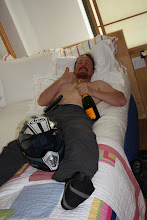
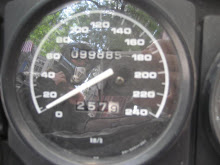
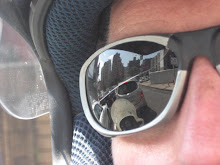
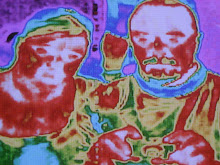





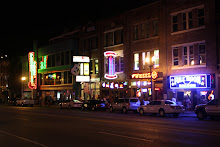



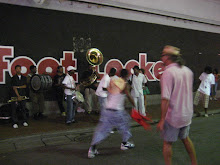


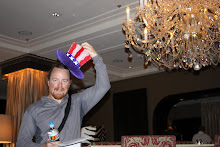
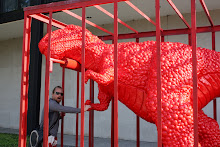
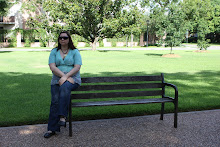



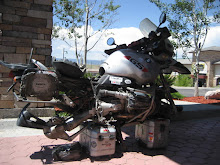


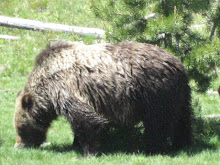
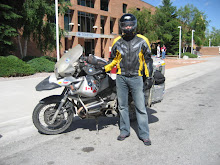
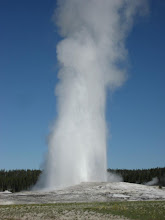



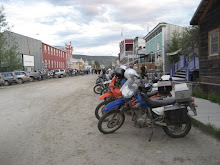


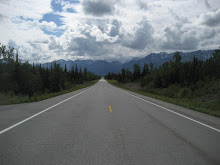

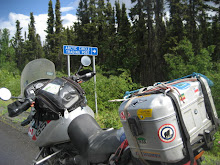
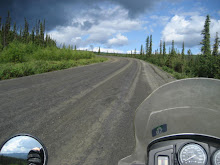
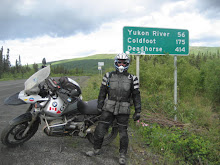
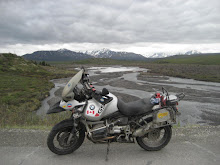
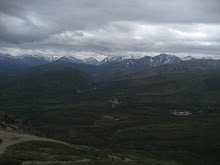
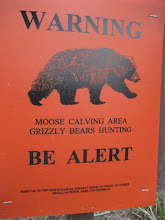


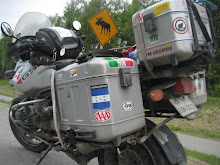
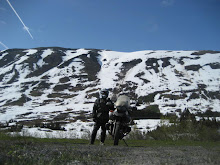

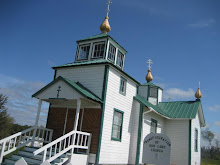
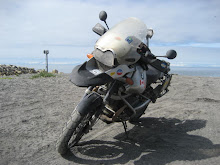

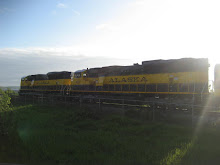
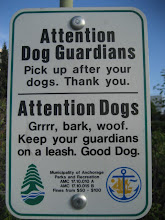
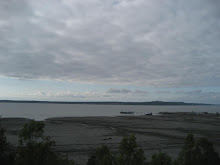




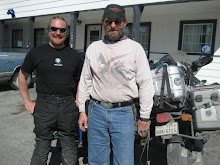

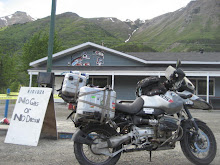




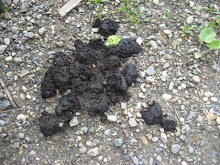

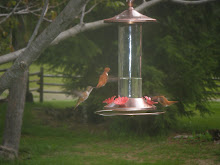
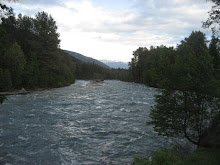
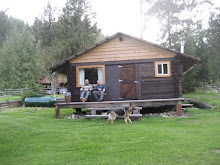
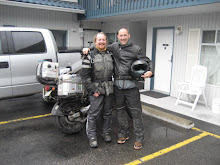
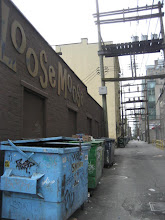
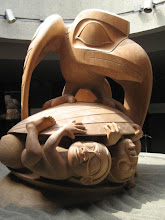
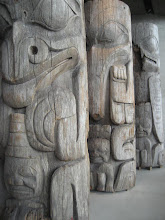
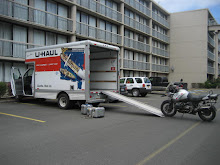




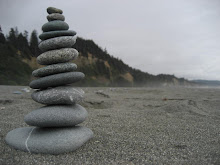
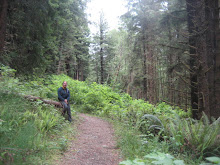
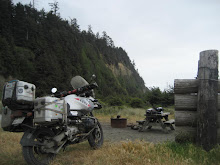
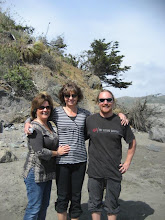

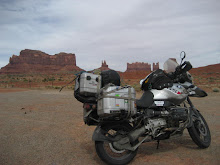
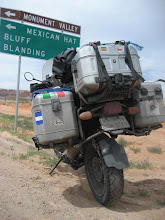
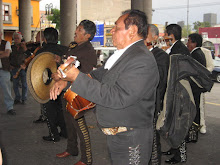
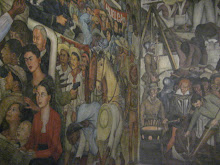



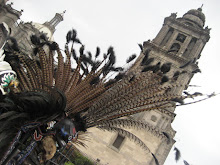
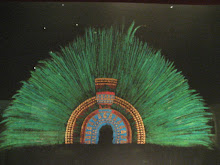
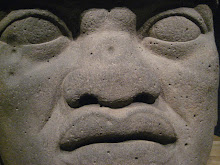
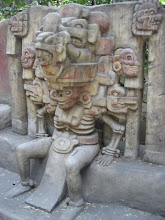






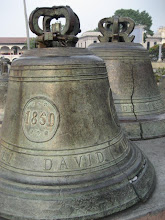
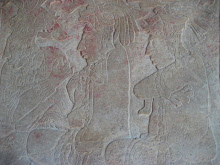
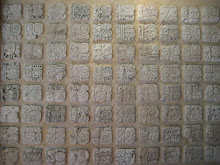
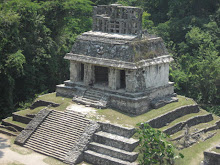




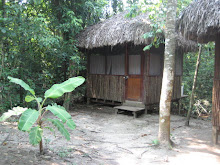
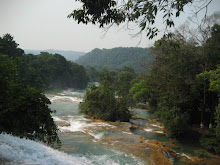
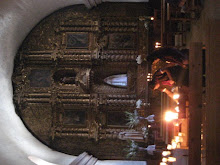
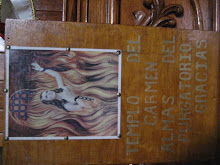
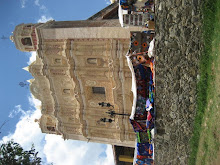


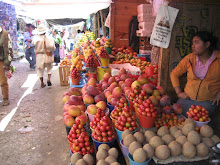
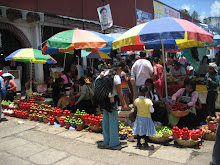
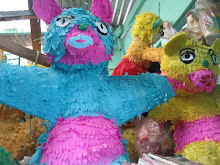
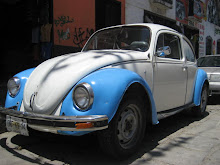
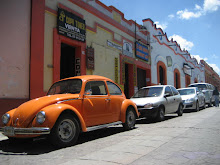

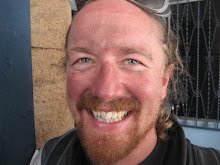
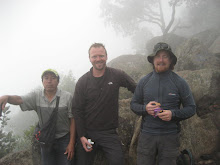


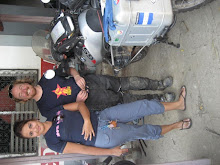
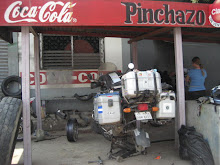

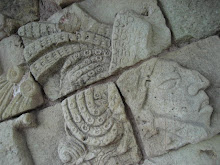

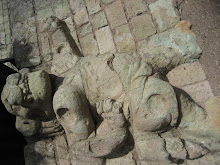


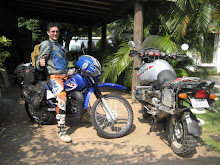







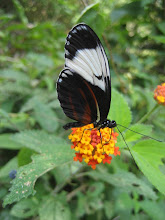
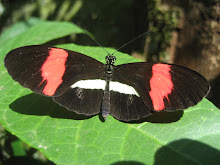
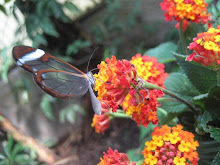
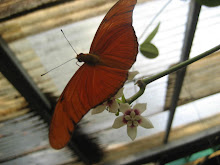
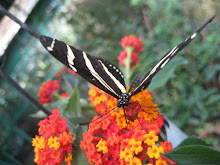
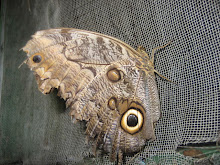

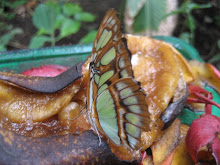
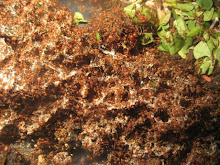
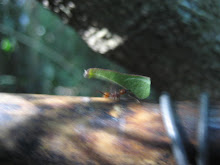


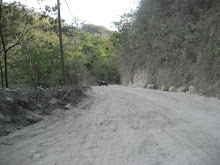

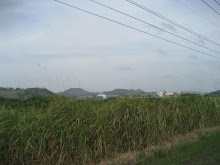

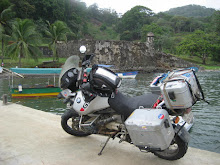
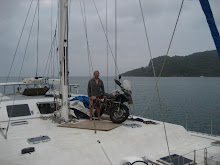
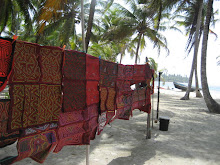

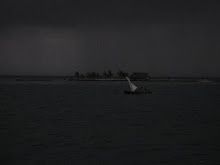
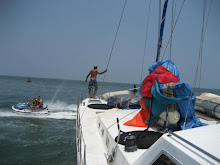
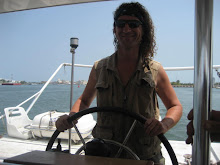

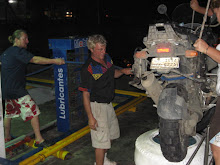
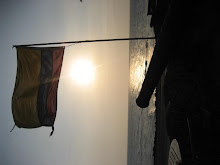
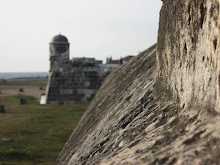
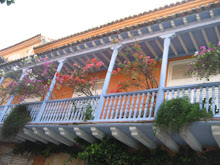
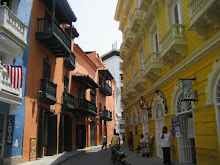
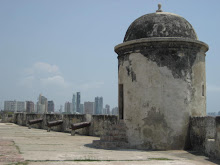
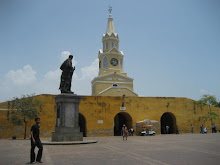
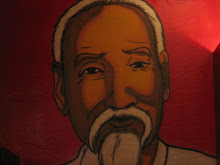
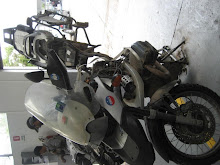



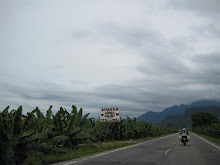
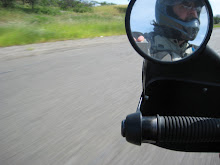
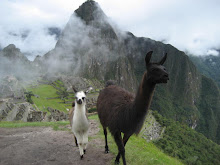



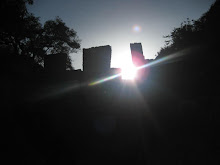


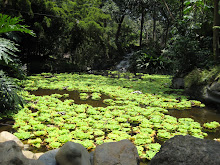
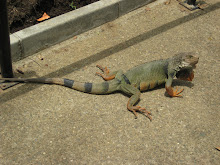



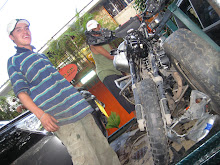

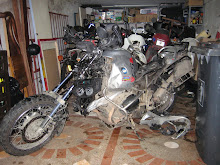
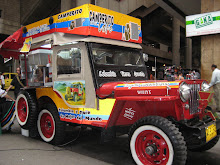
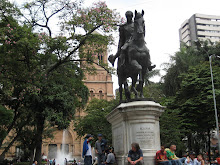
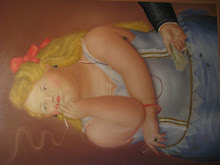
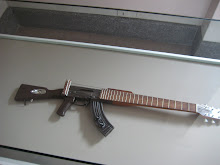
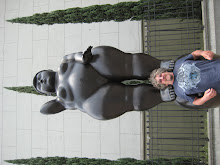
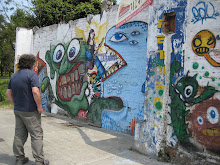


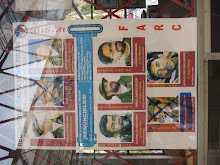
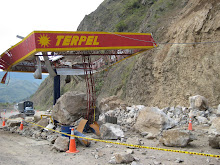
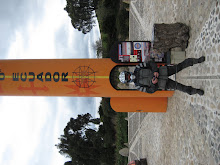
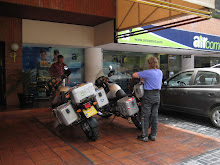
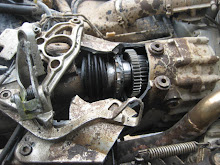
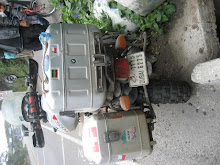

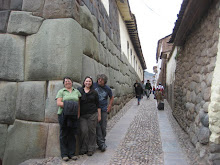


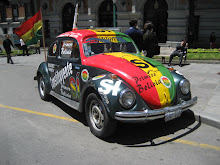
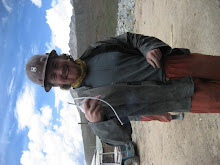


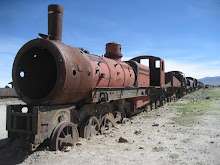



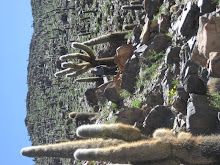
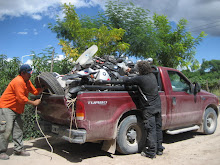
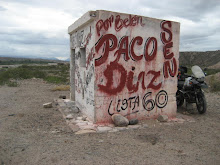

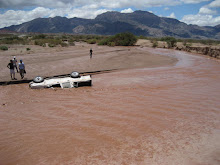
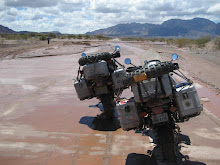
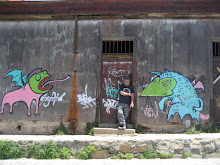
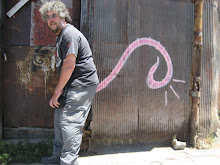



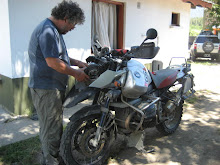
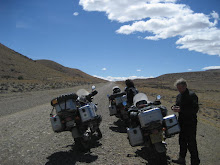







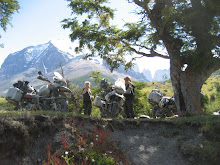

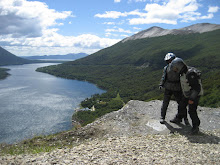

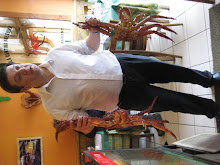
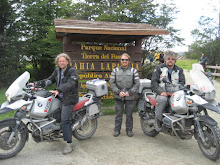

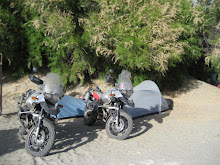




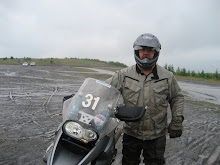
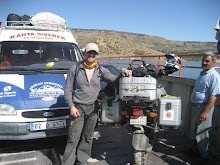
No comments:
Post a Comment